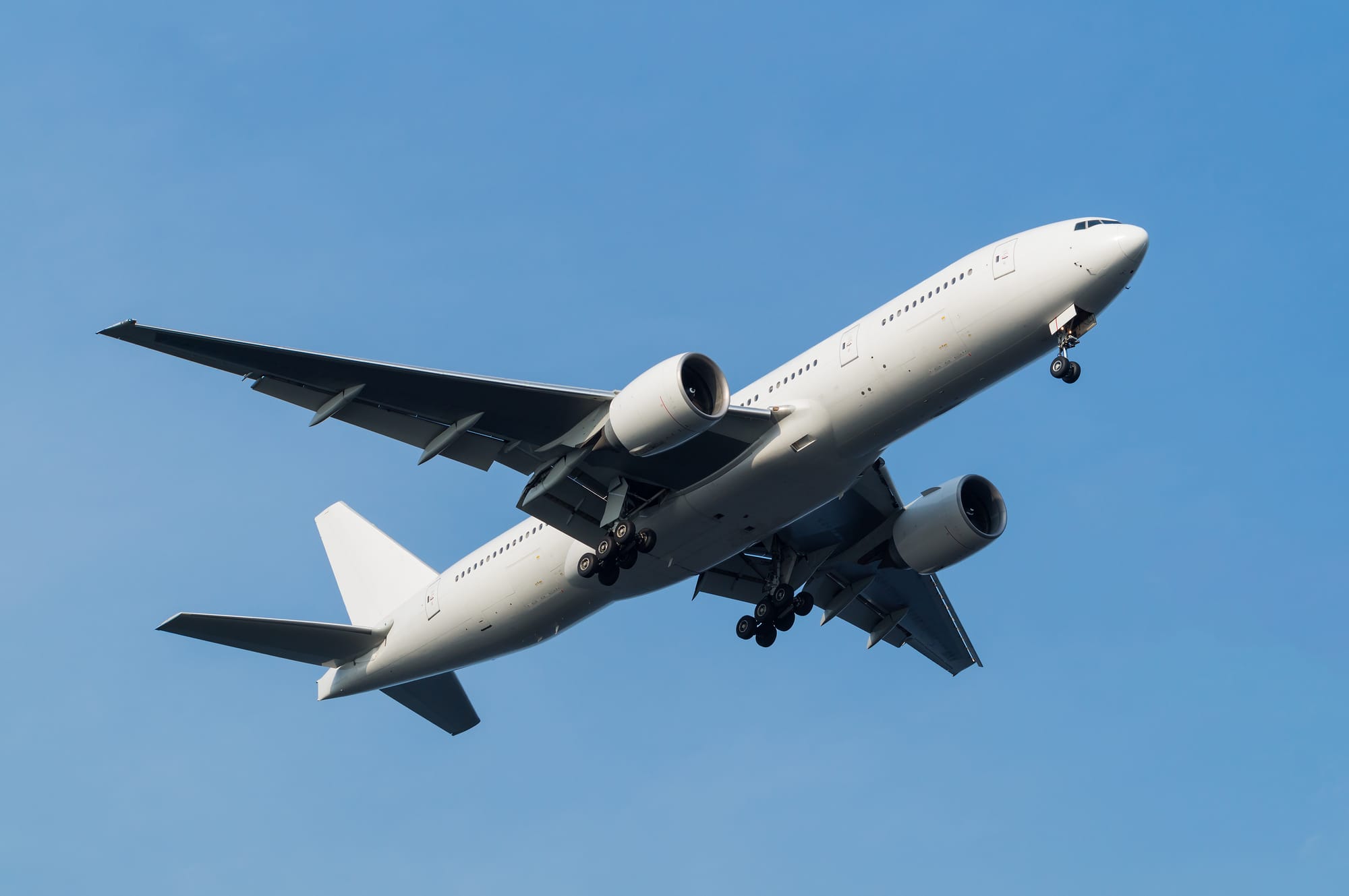There are more people using aircrafts as a means of transport than ever before. To add to this, flying is considered one of the safest ways to travel.
Despite this, a significant portion of the population fears flying. Stratos estimates that this number could be anywhere between 2.5% and 5% of the population.
And who can fault them? Air travel is one of those areas where passengers have little to no control. An aircraft can run out of fuel or experience engine failure mid-air.
To ease your concerns, I’ll be addressing one of these issues in this post. Specifically, I’ll be answering the question, can a 777 take off on one engine? Fortunately, the answer to this is yes, it can. More on this below.
The Boeing 777 Engine
The Boeing 777 is a passenger aircraft that’s powered by two engines, both of the same model: GE90-115BL. Each engine generates at least 115,000 pounds of thrust.
Modern-day aircrafts, including the Boeing 777, can operate efficiently and safely on a single engine. Specifically, it can take off and even land using the remaining single engine.
How Far Can a Boeing 777 Fly on One Engine?
The reason why these aircrafts continue operating on one engine is because they’re assigned an extended twin-engine operations rating.
Usually abbreviated as ETOPS, this system determines how long a given aircraft remains functional when powered by one engine. The higher the figure, the longer that aircraft can fly on a single engine.
In that regard, Boeing 777 has an ETOPS rating of 330 minutes. So not only can it take off on one engine but it can also fly and land within a span of 5 ½ hours.
That said, it’s very rare for this aircraft to take off on one engine. The reason for this is that detailed inspections are conducted before it gets to this stage.
But if one engine malfunctions immediately after take-off, the pilot can safely execute the take-off. In fact, they can even fly it to a different landing spot as long as there’s enough runway for the initial take-off.
What if both engines fail? Well, for twin-engine aircrafts like the 777, a failure of both engines would force the pilot to abort the take-off process. But if the aircraft runs on four engines, then it can take off and fly using the two remaining engines.
However, there are several aviation rules that the flight crew should abide by in the event of engine failure.
Aviation Rules for 777 Engine Outage
When an engine fails, it’s easy to panic and forget safety rules. But, it’s crucial that you remain as calm as possible and give the flight crew time to execute necessary measures.
All pilots train extensively on how to respond to emergency engine failures. So they know just what to do to keep the plane flying and land it. If you’re a little bit curious, there are three key things that a pilot is trained to do in case of an engine failure. These are:
Control Airspeed
One of the things that a pilot has to do is to keep the aircraft properly balanced. The minute the first engine shuts down, the remaining engine tries to compensate by increasing thrust so as to maintain airspeed.
Unfortunately, this can force the aircraft to make an unintended turn. To prevent this, the pilots correct the imbalance manually by using rubber pedals.
Identifying a Suitable Landing Spot
Anytime one of the engines malfunctions, the flight crew communicates this information to the Air Traffic Control team on the ground. This way, the supporting team can identify a new landing spot and recommend it to the pilots.
Use a Different Landing Approach
Landing the Boeing 777 and other aircrafts on two engines is easier than doing it on one.
If a plane is powered by just one engine, it will likely require a longer landing distance. As such, pilots are very meticulous when choosing their new landing destinations. They take several factors into account such as climate, length of the runway and the aircraft’s weight.
Final Thoughts
If you’ve been wondering whether a 777 can take off on a single engine, the answer is yes. It has an extended twin-engine operations rating (ETOPS) of 330 minutes.
This gives the flight crew ample time to initiate take-off, fly and land the plane within a period of 5 ½ hours. The only condition is that the airport should have enough runway in case the aircraft needs to travel a longer distance before taking off.

